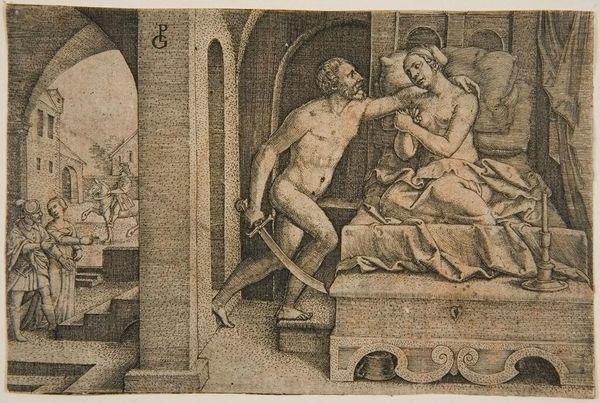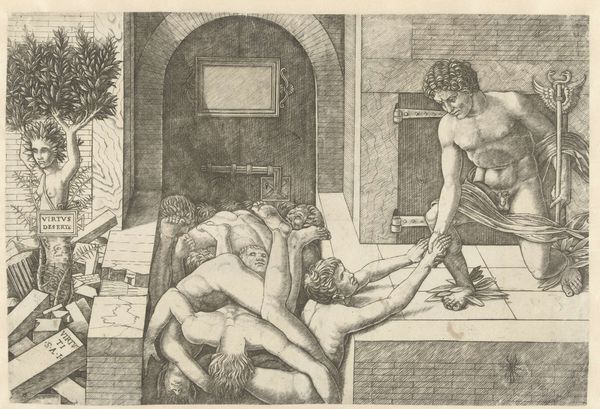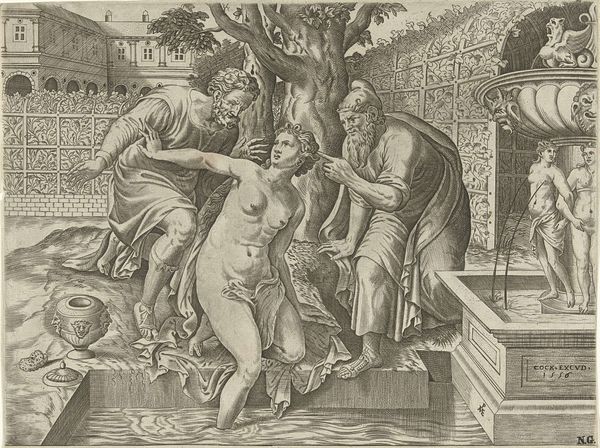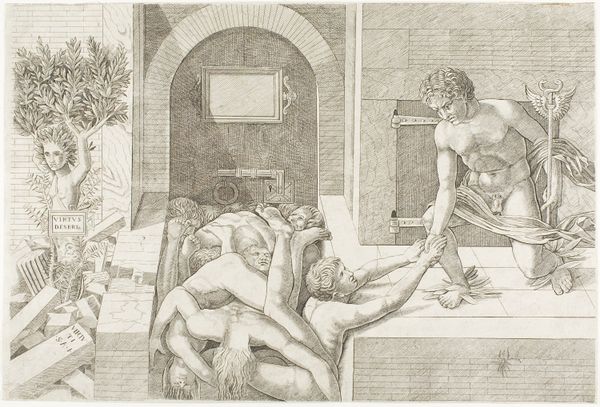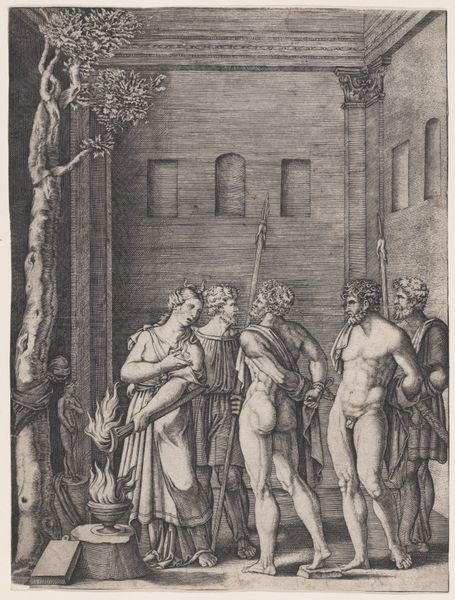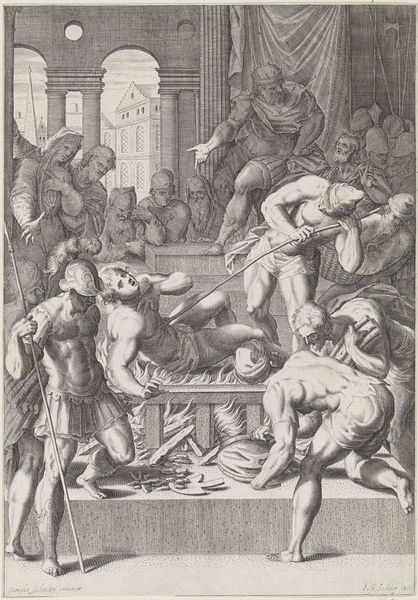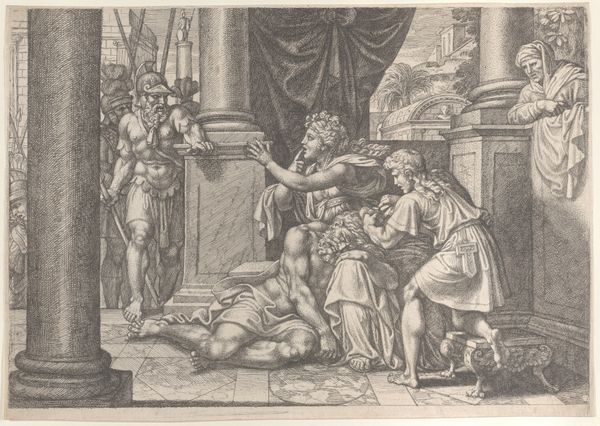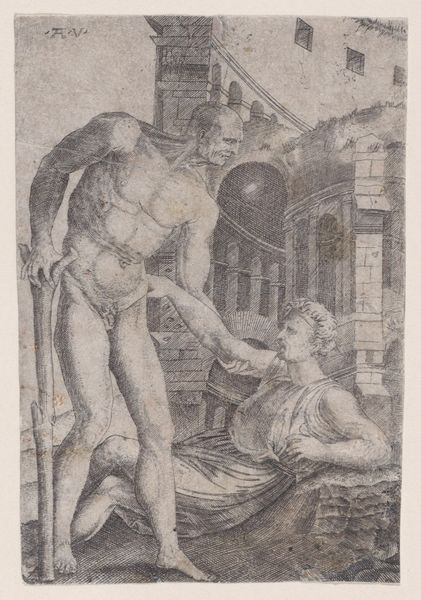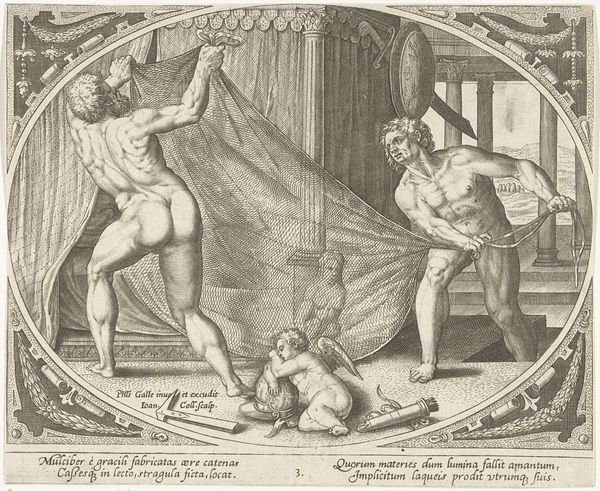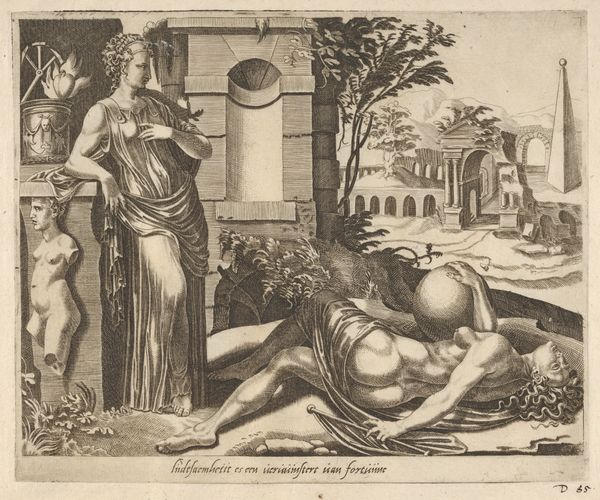
Tarquinius Rapes Lucretia, from Scenes from Roman History 1541 - 1552
0:00
0:00
drawing, print, engraving
#
pencil drawn
#
drawing
# print
#
figuration
#
11_renaissance
#
female-nude
#
pencil drawing
#
history-painting
#
engraving
#
sword
#
male-nude
Dimensions: Sheet: 3 3/16 × 4 3/4 in. (8.1 × 12 cm)
Copyright: Public Domain
This tiny, yet potent, print of “Tarquinius Rapes Lucretia” was made by Georg Pencz in the mid-16th century. It's an engraving, meaning that the image was incised into a copper plate with a tool called a burin. The act of engraving demands incredible precision. The artist meticulously carves lines into the metal surface, each one holding ink that then transfers to paper. The varying depths and densities of these lines create the tonal range we see, from the darkest shadows to the lightest highlights on Lucretia's skin. Look closely, and you will see how Pencz uses hatching – closely spaced parallel lines – to build up the forms and textures. Prints like this were relatively inexpensive and could be circulated widely. They served as a means of disseminating stories and ideas, reflecting not only artistic skill but also the rise of a print culture and early forms of mass communication. In its making and distribution, this print reflects the socio-economic conditions of its time. It is a reminder that even the most dramatic narratives are shaped by the materials and processes used to tell them.
Comments
No comments
Be the first to comment and join the conversation on the ultimate creative platform.
